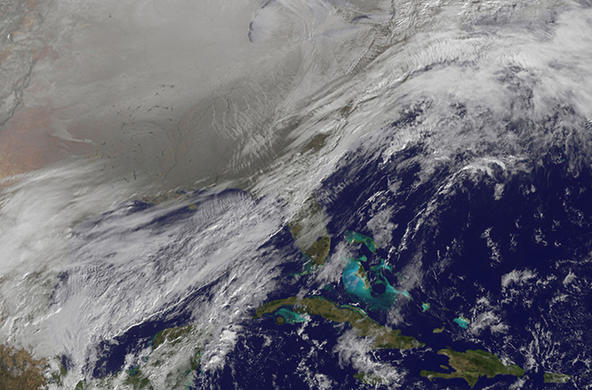Each year in the US, millions of tons of road salt are applied to roads to manage snow and ice and maintain safe driving conditions. This salt-dependence comes at a high cost to state and town budgets, drinking water supplies, and the quality of freshwaters.
Road salt overuse has been linked to the salinization of drinking water wells, reservoirs, streams, and lakes. Sensitive wildlife and people on reduced sodium diets are among those at risk.
Cary Institute of Ecosystem Studies has issued a new report on strategies for curbing road salt pollution. Road Salt: The Problem, The Solution, and How To Get There summarizes current science on the environmental and health impacts of road salt, and best management practices for preventing overuse while maintaining public safety.

Stuart Findlay is an aquatic ecologist at Cary Institute and a report co-author. He explains, “Road salt is a major pollutant that lingers long after snow has melted. Freshwaters near roadways are the most vulnerable. Salt does not just wash away; it is retained in watersheds for decades – threatening wells and wildlife. Without action, this is a problem we are handing down to future generations.”
The report’s goal is to equip public and private road managers, citizens, and decision makers with the information needed to reduce road salt pollution and improve the quality of drinking water and aquatic ecosystems.
At its core are best management practices recommended to reduce the amount of road salt that gets into the environment. These include using brine to pretreat roads, adopting new plow types, using technology to regulate application rates, and covering salt piles.

Vicky Kelly, Manager of Cary Institute’s Environmental Monitoring Program, is the report’s lead author. She notes, “We’ve been using road salt for 80 years. The environmental impact of this long-term practice is now clear. It’s time to take action. We can adopt best management practices that ensure public safety while using less salt. Implementing these strategies will help protect our water and reduce the cost of salt in our budgets – a win-win situation for everybody.”
Fast facts about road salt:
- Each year, the US applies 15-32 million metric tons of salt to keep roads snow-free
- Pre-treating roads with brine can reduce the total amount of road salt needed to deice roads by ~75%
- Accumulation of road salt in surface and groundwater is a growing problem that compromises drinking water and degrades the health of creeks and streams
- It can take decades for road salt to flush out of a watershed
The report builds on a Road Salt Forum held at Cary Institute in 2018. Video proceedings of the forum are available online.
Kelly, V.R., Findlay, S.E.G., Weathers, K.C. 2019. Road Salt: The Problem, The Solution, and How To Get There. Cary Institute of Ecosystem Studies.
Cary Institute of Ecosystem Studies is an independent nonprofit center for environmental research. Since 1983, our scientists have been investigating the complex interactions that govern the natural world and the impacts of climate change on these systems. Our findings lead to more effective management and policy actions and increased environmental literacy. Staff are global experts in the ecology of: cities, disease, forests, and freshwater.





